Past and Present: Fort Lafayette
A look at Brooklyn, then and now. When we look at New York City’s beautiful harbor, it’s hard to remember that this great seaport city needed defending. All of the city’s boroughs once held fortifications that were necessary to protect the harbor and the city from invading forces. Some of those fortifications were necessary and…


A look at Brooklyn, then and now.
When we look at New York City’s beautiful harbor, it’s hard to remember that this great seaport city needed defending. All of the city’s boroughs once held fortifications that were necessary to protect the harbor and the city from invading forces. Some of those fortifications were necessary and active, if not in our lifetimes, then certainly in most of our parents’ lifetimes.
After America gained its independence from Great Britain, we had a few rocky decades getting started. Our ability to trade through shipping was one of the great successes of the new nation, and that was one of the many factors that led to the War of 1812. We were trading partners with France, which was at war with England at the time. We also had a merchant navy with a lot of former British sailors, who had become Americans. England needed sailors for their navy, did not recognize the change of nationality and allegiance, and wanted them back. They raided ships and took them. There were plenty of other reasons for the war, as well.
Long story short, in 1812, the United States declared war on Great Britain. New York was one of the great ports of the new nation, and needed additional fortification. Off the southern coast of Brooklyn, near the entrance to the Narrows, Fort Hamilton stood guard on one side of the harbor, while Fort Wadsworth guarded the other side of the Narrows, on Staten Island. The Narrows were the door to New York’s harbor, so the military decided to beef up the defense with another fort right near Fort Hamilton. They chose a barrier reef just off the coast in what is now Bay Ridge, and built a fort.
The barrier reef island was called Hendrick’s Reef. The fort was begun during the War of 1812, but was not finished until 1818, three years after that war ended. It was originally called Fort Diamond. In 1825, the name was changed to Fort Lafayette to honor the Marquis De La Fayette, the great French hero of the American Revolution who was touring America that year.
The fort was made of brick, and if looked down on from above, very much resembled a baseball stadium. The walls were deep and thick, with a center courtyard. It had arched ports on several levels that circled the building, giving the defenders a 360 degree view. It could defend the harbor with 72 cannon at the ready. They were never used in combat.
During the Civil War, the fort became a prison for important high-level Confederate prisoners. Over the course of the war there were anywhere from 20 to 150 prisoners there at a time. They included the mayors of Baltimore, Washington DC, and General William F. Lee, the brother of General Robert E. Lee. Ironically, Francis Key Howard, the grandson of Francis Scott Key, who wrote the poem that became the lyrics for the National Anthem, during the War of 1812, was also imprisoned here during the Civil War. He was the editor of the Baltimore Exchange, a newspaper with pro-Southern leanings.
In 1864, a Confederate plot was hatched to burn down New York City. Confederate President Jefferson Davis had a hand-picked group of men who were supposed to come down from neutral Canadian soil, conduct raids and burn key NYC buildings, and run back up to Canada. The operation failed. Robert Cobb Kennedy, the only conspirator who was captured as he tried to make his way back to Louisiana, was brought to the fort, where he was tried and hanged. He was the only person to be executed at Fort Lafayette.
After the war, a disastrous fire nearly burned the whole thing down in 1868. It was rebuilt, and in 1898 was transferred to the US Navy, which used it for ammunition storage and supplies. During World War II, it was also used for ammo storage, and a naval barracks was maintained on the island. But after the war, the place was allowed to fall into disrepair and it was abandoned. In 1948, the Navy gave the island and Fort Lafayette to the City of New York.
Plans were drawn up for a bridge across the Narrows in 1949. It was one of Robert Moses’ last big public works projects. It was also the last project designed by Chief Engineer Othmar Ammann, who had designed many of New York City’s bridges, including the George Washington Bridge, the Triborough Bridge, Throgs Neck Bridge and the Whitestone Bridge. In the course of building the bridge many Bay Ridge families were displaced from their homes to make way for the roadways and bridge superstructure. The other casualty of the bridge was Fort Lafayette.
Construction of the bridge began in August of 1959. Fort Lafayette was torn down in 1960. The Brooklyn side bridge pillars now rest on the foundations of the fort. Very few people today know that Fort Lafayette was ever even there.
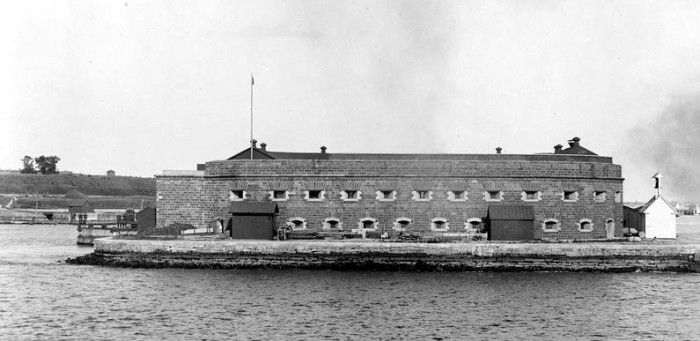
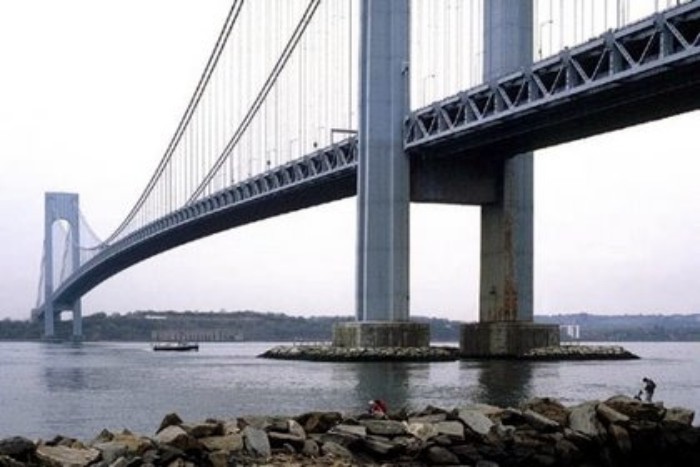
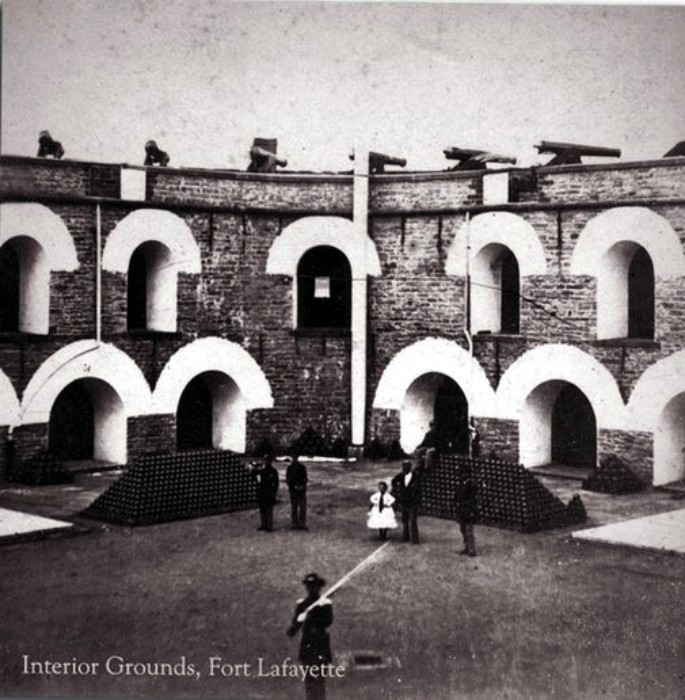
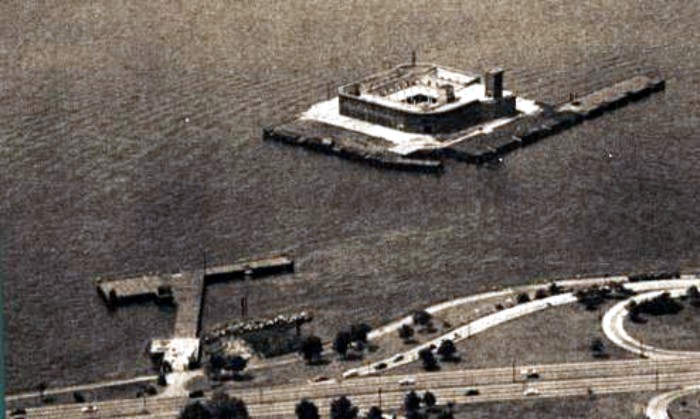


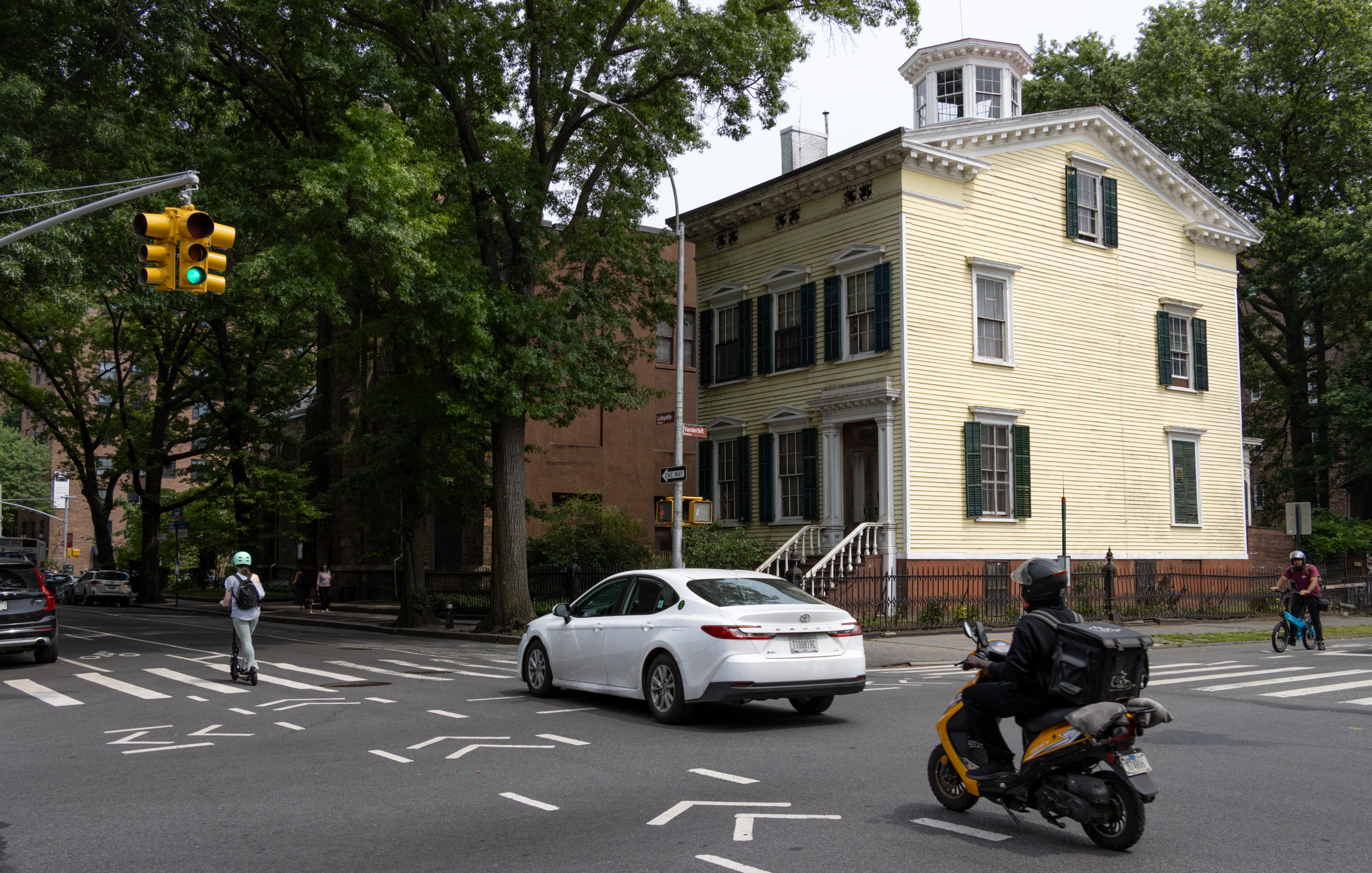
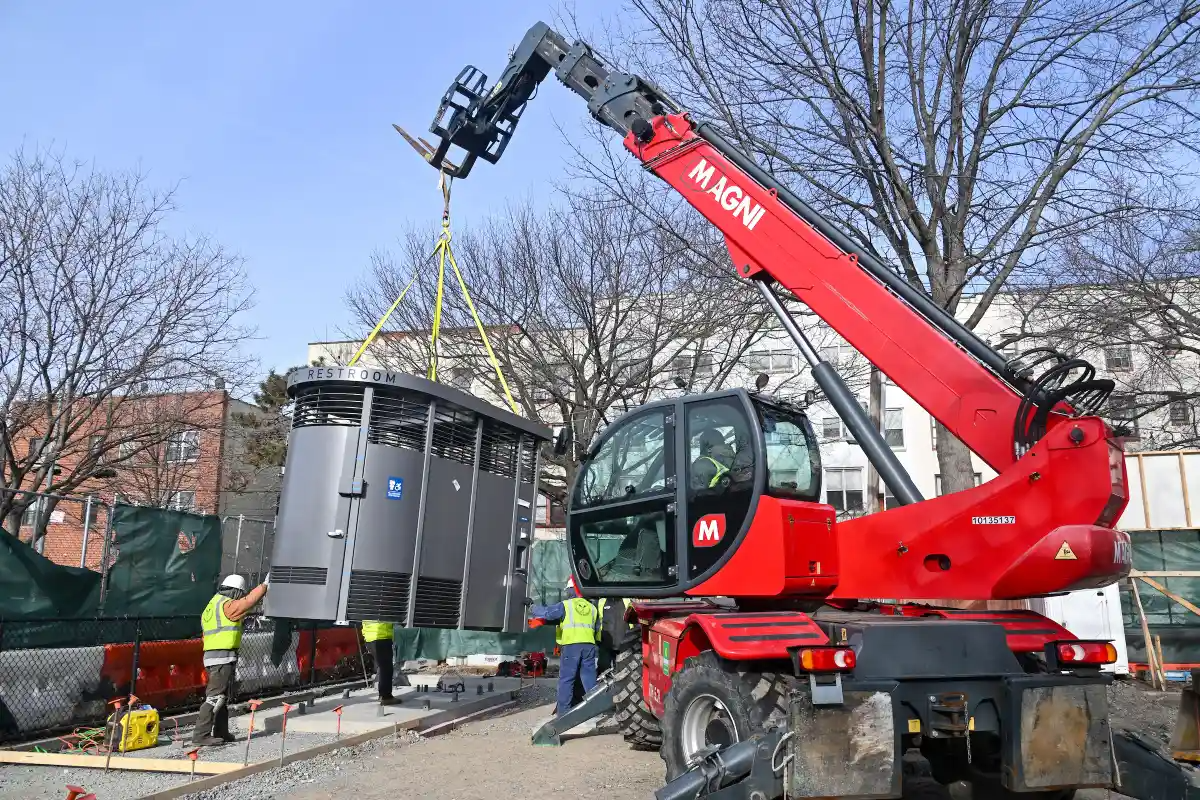

Thanks for a very interesting article and the terrific photos.
When my Aunt and Uncle moved to Bath Beach around 1957, we would travel from Greenpoint down the Belt and pass Ft. Lafayette. So I remember it well, if somewhat vaguely. I did not realize that it had been abandoned for a number of years by the time I first saw it.
When my father told me that the bridge’s Brooklyn tower would be built on top of the old fort, I – and I am sure many other persons – did not realize that structure would be completely obliterated. So thanks for informing us of this long lost fort.